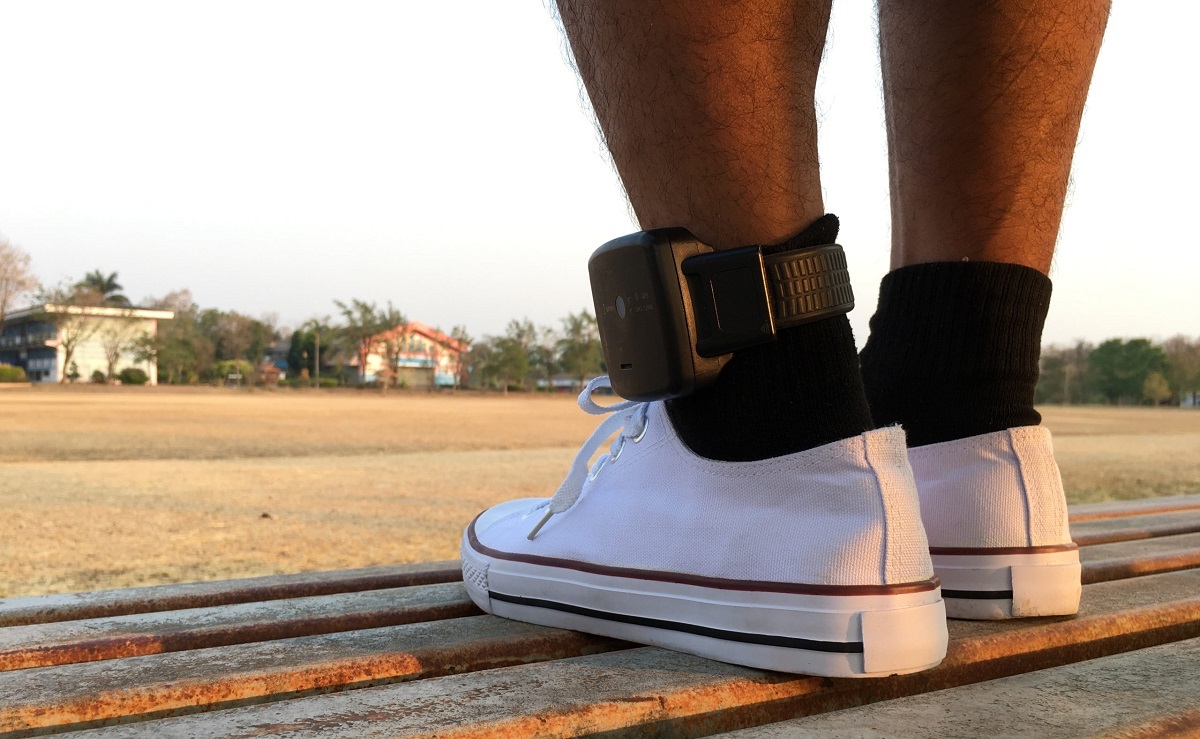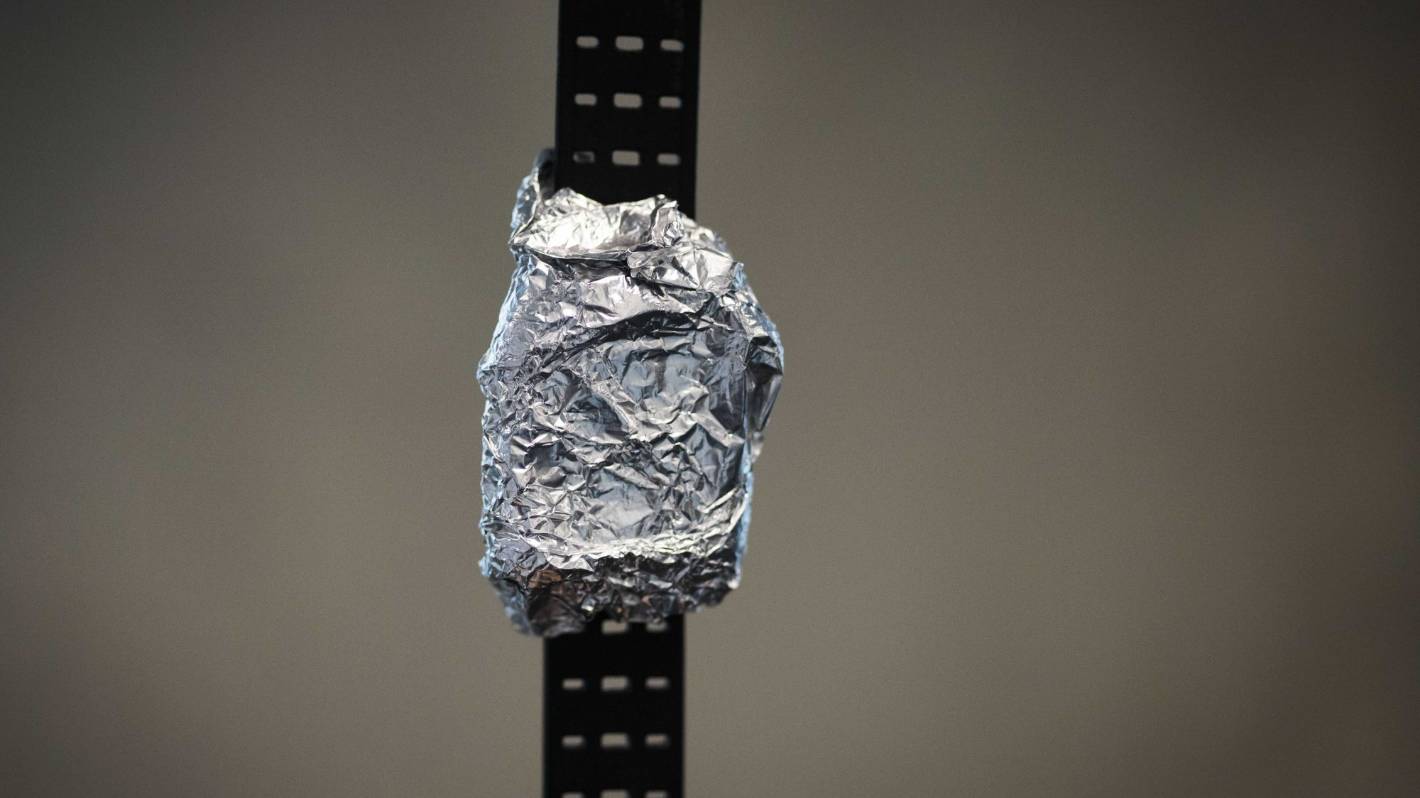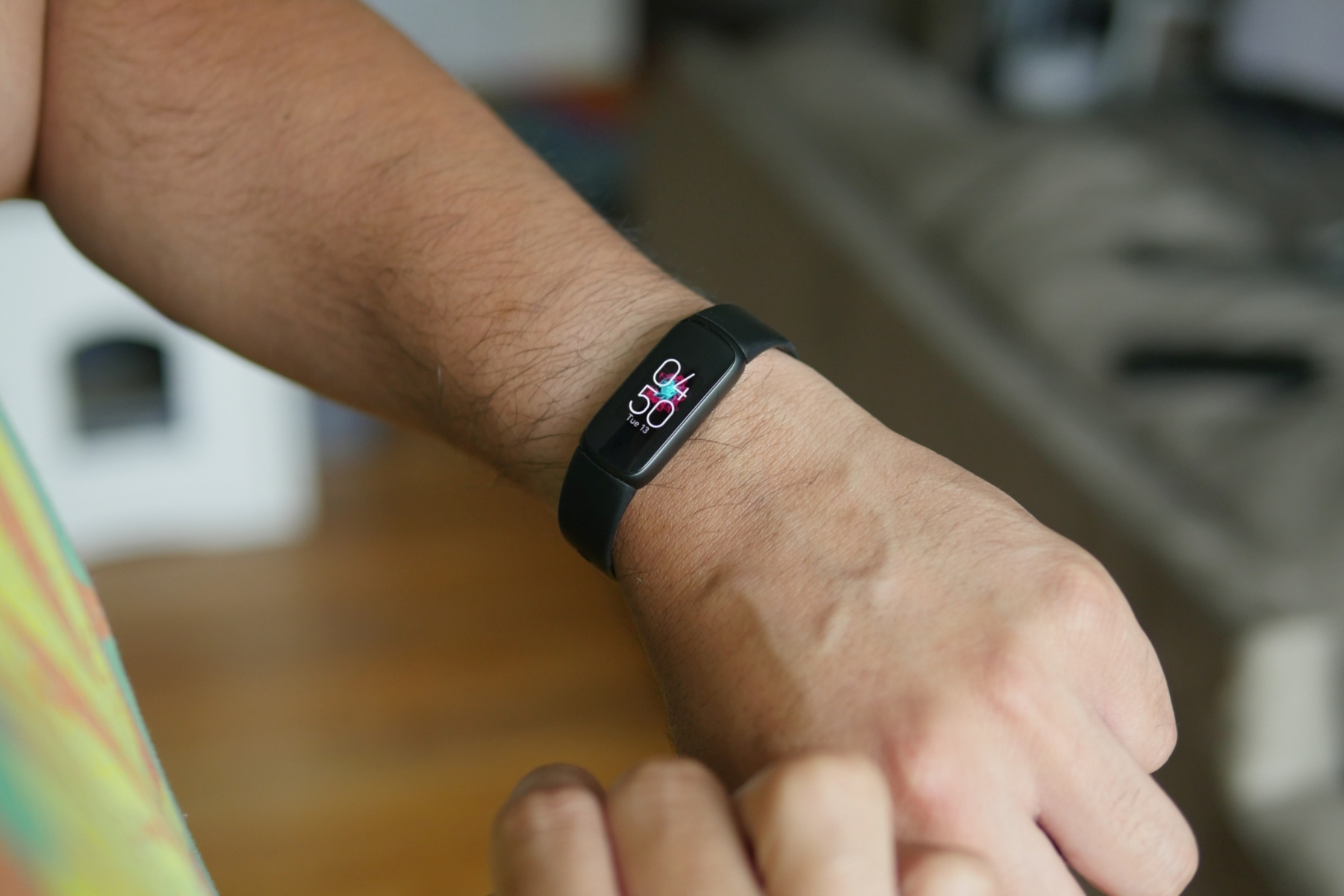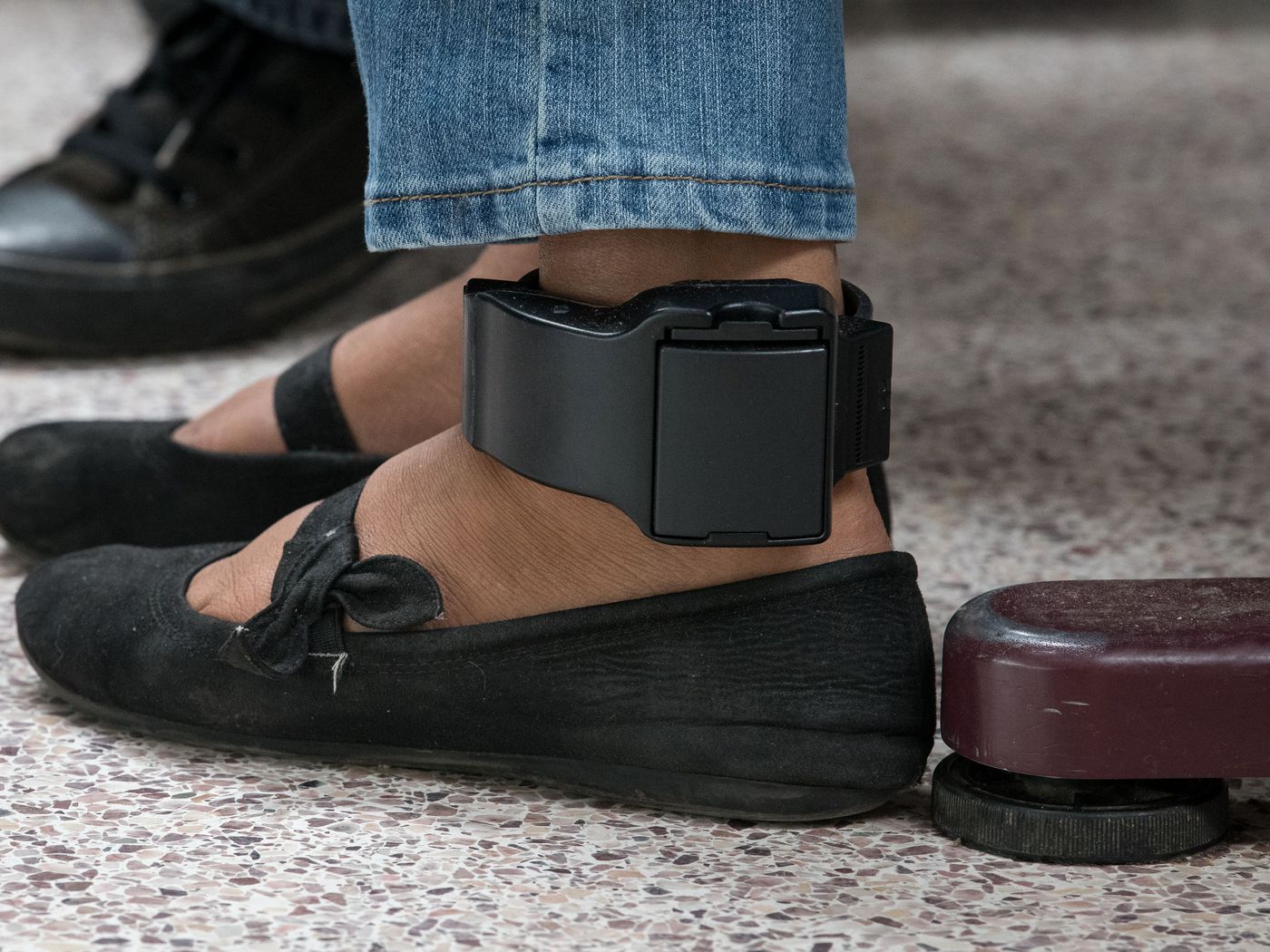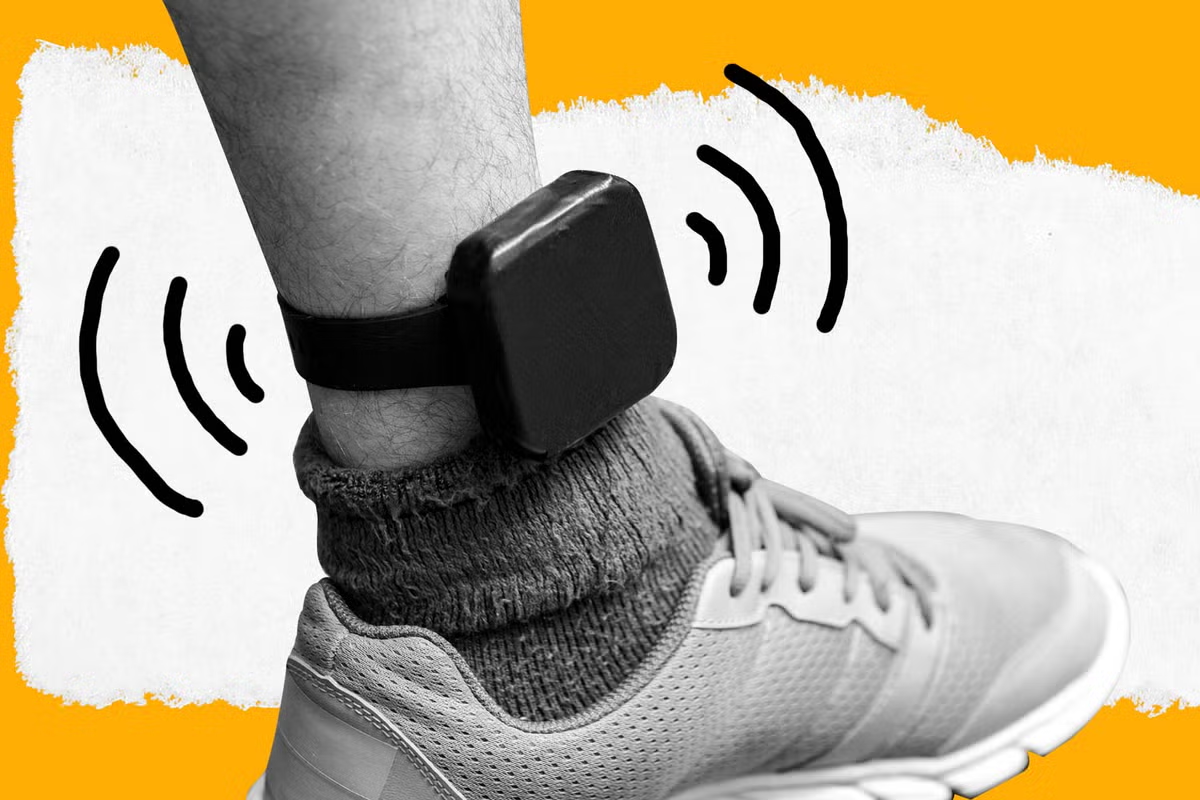What Is an Ankle Monitor
An ankle monitor, also known as an electronic monitoring device or GPS ankle bracelet, is a device that is worn around the ankle to monitor the location and movement of an individual. It is commonly used as a form of supervision and tracking for individuals who are under house arrest, on parole, or on probation.
The ankle monitor consists of a strap or band that is secured around the ankle, and it is equipped with a tracking device that uses GPS or radio frequency technology to monitor the person’s whereabouts. The device is usually lightweight and tamper-proof, designed to be worn comfortably for extended periods of time.
When an individual is required to wear an ankle monitor, their movements are closely monitored by the designated authorities. This allows law enforcement officials, probation officers, or court officials to track their location and ensure compliance with the assigned restrictions or conditions.
The ankle monitor is typically connected to a central monitoring system that receives and analyzes the data transmitted by the device. The system can provide real-time information about the person’s location, movements, and activities. Any unauthorized movement or tampering with the device triggers an alert, notifying the appropriate authorities of a potential violation.
Ankle monitors serve as an alternative to incarceration, providing a way to monitor and supervise individuals while allowing them to remain in the community. This can be particularly beneficial for non-violent offenders, as it allows them to maintain employment, support their families, and participate in rehabilitative programs, all while being closely monitored.
Although ankle monitors are commonly associated with the criminal justice system, they can also be used in other contexts. For example, they may be utilized in cases involving restraining orders or child custody disputes to ensure compliance with court orders and the safety of individuals involved.
In summary, an ankle monitor is a tracking device worn around the ankle, allowing authorities to monitor the movement and location of individuals who are under supervision. It serves as an alternative to confinement and enables individuals to fulfill their obligations while being closely monitored.
How Does an Ankle Monitor Work
An ankle monitor operates using a combination of GPS (Global Positioning System) and RF (Radio Frequency) technology to track the wearer’s movements and ensure compliance with the assigned restrictions or conditions. Let’s dive into how this technology works:
1. GPS Technology: The ankle monitor is equipped with a GPS receiver, similar to those found in smartphones or navigation devices. This receiver communicates with GPS satellites orbiting the Earth to determine the wearer’s precise location. GPS technology allows for accurate tracking and provides real-time data on the person’s movements.
2. RF Technology: In addition to GPS, ankle monitors also utilize RF technology, which works by establishing a radio frequency communication link between the ankle monitor and a receiver located nearby. This receiver, generally installed in the wearer’s home or another designated location, acts as a base station for monitoring and data transmission.
3. Monitoring System: The ankle monitor transmits data collected from both GPS and RF technologies to a central monitoring system. This system is operated by the designated authorities, such as law enforcement or probation officers, who monitor the wearer’s movements and analyze the data received from the ankle monitor.
4. Compliance Monitoring: Ankle monitors can be programmed to enforce specific restrictions or conditions. For example, they can establish exclusion zones or “virtual fences” around certain areas, such as a victim’s residence or a prohibited location. If the wearer enters these restricted zones, it triggers an alert, notifying the monitoring system about a potential violation.
5. Alert Notifications: If any unauthorized movement or tampering with the ankle monitor is detected, such as attempts to remove or disable the device, the monitoring system receives an alert. The designated authorities are then alerted to take appropriate action, such as conducting an investigation or initiating contact with the wearer.
6. Data Analysis and Reporting: The monitoring system collects and analyzes the data received from the ankle monitor. This data can include information about the wearer’s location, movements, speed, and compliance with assigned restrictions. The authorities use this data to evaluate the wearer’s adherence to the terms of their release and to ensure their safety and the safety of others.
It is important to note that while ankle monitors are effective in monitoring an individual’s location, they do have limitations. Factors such as signal strength, environmental conditions, and device battery life can potentially impact the accuracy and reliability of the tracking information.
In summary, ankle monitors utilize GPS and RF technology to track the wearer’s movements. Data from the ankle monitor is transmitted to a central monitoring system, enabling authorities to monitor compliance and ensure the safety and security of individuals under supervision.
Types of Ankle Monitors
Ankle monitors come in various types, each designed to serve specific monitoring needs and requirements. Let’s explore some of the common types of ankle monitors used today:
1. GPS Ankle Monitors: These ankle monitors utilize GPS technology to track the wearer’s location in real-time. They rely on GPS satellites to determine the exact coordinates and transmit the data to the monitoring system. GPS ankle monitors provide accurate tracking and are commonly used for supervising individuals on parole, probation, or house arrest.
2. RF Ankle Monitors: RF ankle monitors, also known as proximity monitors, operate based on radio frequency technology. They work by establishing a communication link between the ankle monitor and a receiver installed in the wearer’s home or a designated location. The proximity between the ankle monitor and the receiver is monitored, and any unauthorized distance triggers an alert. RF ankle monitors are often used to enforce house arrest or restricted movement within a specific area.
3. Hybrid Ankle Monitors: Hybrid ankle monitors combine both GPS and RF technology for enhanced monitoring capabilities. These advanced devices provide the benefits of both GPS accuracy and RF proximity monitoring. Hybrid ankle monitors are ideal for cases where precise location tracking is required, along with ensuring compliance with restricted areas or exclusion zones.
4. Alcohol Monitoring Ankle Monitors: Alcohol monitoring ankle monitors, also known as SCRAM (Secure Continuous Remote Alcohol Monitoring), are specialized devices used to monitor an individual’s alcohol consumption. These ankle monitors can detect alcohol ingestion through the wearer’s sweat or skin. They are commonly used for individuals with alcohol-related offenses or as a condition of probation or parole.
5. Tethered Ankle Monitors: Tethered ankle monitors are unique in that they are physically connected to a designated installation, such as a telephone line or electrical outlet, through a wire or cord. This type of ankle monitor is commonly used for individuals who are under home detention or required to stay within a specific range of their residence. If the cord is disconnected or tampered with, an alert is triggered.
6. Two-Way Communication Ankle Monitors: Some ankle monitors include two-way communication capabilities, allowing wearers to communicate directly with monitoring personnel or emergency services. These devices may have a built-in microphone and speaker, enabling verbal communication when necessary. Two-way communication ankle monitors are commonly used for individuals with medical conditions or those requiring immediate assistance.
It is worth noting that the availability and use of different types of ankle monitors may vary depending on the jurisdiction and the specific requirements of the monitoring program or court order.
In summary, ankle monitors come in various types, including GPS ankle monitors, RF ankle monitors, hybrid ankle monitors, alcohol monitoring ankle monitors, tethered ankle monitors, and two-way communication ankle monitors. The choice of ankle monitor depends on the monitoring needs and the specific requirements of the individuals being supervised.
Benefits of Using Ankle Monitors
Ankle monitors offer several benefits as a monitoring and supervision tool for individuals who are under house arrest, on parole, or probationary conditions. Let’s explore some of the key advantages of using ankle monitors:
1. Alternative to Incarceration: Ankle monitors provide a viable alternative to traditional incarceration, allowing individuals to remain in their communities while still being monitored. This promotes rehabilitation and reduces the burden on correctional facilities, while still maintaining a level of control and supervision.
2. Maintaining Employment and Support Networks: By wearing an ankle monitor, individuals can continue working and contributing to their families and communities. They can maintain their employment, keep their support networks intact, and fulfill their responsibilities while still being held accountable.
3. Cost-Effective: Ankle monitoring programs can be more cost-effective compared to housing individuals in correctional facilities. In many cases, the cost of monitoring is significantly lower than the expenses associated with incarceration, such as housing, meals, and medical care.
4. Rehabilitation and Reintegration: Ankle monitors can support the rehabilitation and reintegration process for individuals by allowing them to participate in counseling, therapy sessions, or other rehabilitative programs while being closely monitored. This helps individuals address the underlying causes of their behavior and contribute to their successful reintegration into society.
5. Enhanced Public Safety: The use of ankle monitors contributes to public safety by ensuring that individuals under supervision remain within designated areas or comply with specific restrictions. It helps prevent potentially dangerous situations by alerting authorities if the wearer enters prohibited zones or violates set boundaries.
6. Flexibility in Movement: Ankle monitors provide individuals with a certain degree of flexibility in their movements. While there may be restrictions, such as curfews or exclusion zones, individuals can still engage in authorized activities, such as going to work, attending appointments, or participating in approved events, within the allowed parameters.
7. Personal Responsibility and Accountability: Wearing an ankle monitor promotes personal responsibility and accountability, as individuals are aware that their movements and actions are being monitored. This can encourage compliance with the terms of their release and adherence to the assigned restrictions, ultimately supporting their successful transition back into society.
It is important to note that while ankle monitors offer these benefits, they are not without limitations. Factors such as signal strength, technical glitches, or attempts to tamper with the device can impact the effectiveness of ankle monitoring programs.
In summary, ankle monitors provide an alternative to incarceration, promote rehabilitation, and contribute to public safety. They offer individuals the opportunity to maintain employment, support networks, and personal responsibilities while being monitored and held accountable for their actions.
Who Uses Ankle Monitors
Ankle monitors are utilized by various entities and individuals for different purposes. Let’s explore the key groups and individuals who use ankle monitors:
1. Criminal Justice System: The criminal justice system, including law enforcement agencies, courts, and correctional facilities, often employs ankle monitors as a tool for supervision and monitoring. These entities use ankle monitors to track individuals who are under house arrest, on parole, or those serving a sentence in the community instead of being incarcerated.
2. Probation and Parole Officers: Probation and parole officers are responsible for supervising individuals who are released back into the community with certain restrictions or conditions. Ankle monitors provide these officers with a way to monitor the movements and whereabouts of the individuals under their supervision, aiding in ensuring compliance and community safety.
3. Courts and Judicial Systems: Courts and judicial systems may order the use of ankle monitors as a condition of release or supervision. Judges may require individuals to wear ankle monitors as part of their probation, parole, or as a condition of bail, enforcing compliance with court orders and addressing public safety concerns.
4. Correctional Facilities: Ankle monitors may be used by correctional facilities to facilitate the transition from incarceration to community supervision. Instead of keeping individuals in correctional institutions, ankle monitors provide a means of monitoring and supervising individuals as they reintegrate into society, reducing the strain on prison systems.
5. Family Law and Child Custody Cases: Ankle monitors can also be used in family law and child custody cases where there are concerns about the safety or compliance of certain individuals. Ankle monitors may be employed to ensure compliance with court orders, monitor visitation, or enforce protective orders, thereby safeguarding the well-being of individuals involved.
6. Private Companies: In some instances, private companies or organizations may use ankle monitors for various purposes. For example, private security firms may utilize ankle monitors for asset tracking or to monitor the movements of individuals under their protection.
It is important to note that the availability and use of ankle monitors can vary based on jurisdiction and specific legal requirements. The decision to use ankle monitors and the scope of their implementation is determined by the relevant authorities and legal frameworks in place.
In summary, ankle monitors are used by the criminal justice system, probation and parole officers, courts, correctional facilities, family law cases, and private companies for monitoring and supervision purposes. These entities employ ankle monitors to enhance supervision, ensure compliance, and promote public safety.
Limitations of Ankle Monitors
While ankle monitors offer benefits in terms of monitoring and supervision, it is important to consider their limitations. Here are some of the key limitations associated with ankle monitors:
1. Signal Interference: Ankle monitors rely on GPS and RF technology to transmit and receive data. However, certain environmental factors such as tall buildings, dense foliage, or underground areas can interfere with the signal strength and affect the accuracy of tracking information. Signal interference may result in inconsistent or unreliable monitoring data.
2. Battery Life: Ankle monitors are powered by batteries that have a limited lifespan. In some cases, the battery may last for several weeks, while in others it may need to be recharged or replaced more frequently. If the battery dies, it can lead to a temporary disruption in monitoring and raise concerns about compliance.
3. False Positives and Negatives: Ankle monitors may generate false positives or negatives. This means that the device may inaccurately identify prohibited areas or movements, triggering an alert when no violation occurred, or failing to detect a violation when one actually occurred. False alerts can lead to unnecessary disruptions and can undermine the credibility of the monitoring system.
4. Tampering and Manipulation: Some individuals may attempt to tamper with or remove the ankle monitor in order to evade detection or violate their conditions of supervision. While ankle monitors are designed to be tamper-resistant, determined individuals may find ways to disable or interfere with the device. This requires ongoing vigilance from monitoring authorities to detect and address any tampering attempts.
5. Privacy Concerns: The use of ankle monitors raises privacy concerns, as they continuously track the movements and location of individuals. This monitoring can infringe upon an individual’s privacy rights. There is a delicate balance between the need for supervision and an individual’s right to privacy, requiring careful consideration of the boundaries and limitations of monitoring practices.
6. Cost and Resources: Implementing ankle monitoring programs can be costly, requiring financial resources for the acquisition and maintenance of the devices, as well as the personnel needed to monitor and respond to alerts. These costs can pose challenges, particularly for jurisdictions with limited resources or large populations requiring monitoring.
It is essential to recognize these limitations when implementing ankle monitoring programs and to continuously evaluate and address them to ensure the effectiveness and fairness of the monitoring system.
In summary, ankle monitors have limitations, including signal interference, battery life, false alerts, tampering risks, privacy concerns, and associated costs. Recognizing these limitations is important in developing effective monitoring strategies that balance supervision needs with privacy rights and resource constraints.
How Accurate Are Ankle Monitors
Ankle monitors, when properly functioning and used in suitable conditions, can provide a reasonable level of accuracy in tracking the movements and location of individuals. However, it is important to consider several factors that can affect the overall accuracy of ankle monitors:
1. GPS Technology Accuracy: Ankle monitors that utilize GPS technology can provide accurate location tracking, typically within a range of a few meters. GPS relies on satellite signals, and while it is generally reliable, certain factors such as signal blockage from tall buildings or dense forests can impact accuracy. Additionally, in areas with poor GPS coverage, such as indoors or underground, tracking accuracy may be diminished.
2. Signal Interference: Ankle monitors rely on a strong and consistent signal to transmit data to the monitoring system. Signal interference, caused by obstacles or environmental factors, can impact the quality and reliability of the signal. This interference can lead to inaccuracies or gaps in tracking data, particularly in areas with limited signal coverage.
3. Battery Life and Performance: The battery life and performance of ankle monitors can affect their accuracy. If the device’s battery is low or dies, there may be interruptions in tracking or data transmission. It is crucial to ensure that ankle monitors are regularly charged or have their batteries replaced to maintain accurate monitoring.
4. Signal Tampering or Device Manipulation: Individuals wearing ankle monitors may attempt to tamper with or manipulate the device to avoid detection or violate their conditions of supervision. This can involve shielding the device, removing it, or interfering with the signal transmission. Monitoring authorities need to be vigilant in detecting and addressing any tampering attempts to maintain the accuracy and integrity of the tracking data.
5. Environmental Conditions: Ankle monitors may face challenges in certain environmental conditions. For example, extreme weather conditions like heavy rain, snow, or extreme temperatures may impact the performance of the monitoring device. In such cases, the accuracy of the tracking data may be affected.
It is important to note that while ankle monitors strive for accuracy, no tracking system is entirely infallible. Some margin of error is inherent in any monitoring technology. However, advancements in ankle monitor technology continuously address these limitations to improve accuracy.
Monitoring authorities should also regularly assess and calibrate ankle monitors to ensure their optimal performance. Ongoing training and support for officials responsible for monitoring can help identify and resolve any issues to maintain accuracy and efficiency.
In summary, ankle monitors can provide a reasonable level of accuracy in tracking the movements and locations of individuals. However, factors such as GPS technology accuracy, signal interference, battery life and performance, signal tampering, and environmental conditions can impact the overall accuracy of ankle monitors. Efforts should be made to address these factors and improve the accuracy of ankle monitoring systems.
Ankle Monitors and Privacy Concerns
The use of ankle monitors raises valid privacy concerns as they continuously track and monitor the movements and location of individuals. Here are some key considerations regarding privacy when it comes to ankle monitors:
1. Continuous Surveillance: Ankle monitors provide a means of continuous surveillance, which can intrude upon an individual’s privacy. The tracking data collected includes information about where the person has been, when they were there, and potentially who they interacted with. This level of monitoring raises concerns about unnecessary intrusion into an individual’s personal life.
2. Location Data Collection: Ankle monitors collect precise location data, often in real-time, which can reveal sensitive and private information about an individual’s daily routines, personal relationships, and habits. This level of tracking and monitoring can lead to potential abuse or misuse of the collected data if not properly safeguarded.
3. Data Retention and Access: The storage and retention of ankle monitor data is an important aspect of privacy concerns. Authorities and monitoring agencies need to establish clear policies regarding how long the data will be retained and who will have access to it. Striking a balance between the need for monitoring and an individual’s right to privacy is crucial.
4. Scope of Monitoring: Determining the appropriate scope of ankle monitoring is a critical aspect of addressing privacy concerns. Monitoring should be tailored to specific risk factors and individual circumstances, rather than being overly invasive or overly broad. Imposing unnecessary restrictions or subjecting individuals to excessive monitoring raises significant privacy issues.
5. Security and Data Protection: Safeguarding the collected data from unauthorized access or data breaches is vital to protecting individuals’ privacy. Monitoring agencies and authorities must implement appropriate security measures to ensure the integrity and confidentiality of the tracking data. This includes encryption, access controls, and regular audits of data handling practices.
6. Consent and Transparency: Obtaining informed consent from individuals subject to ankle monitoring is essential. Clear communication about how the monitoring system works, what data will be collected, and how it will be used is crucial in establishing trust and respecting privacy. Individuals should have a clear understanding of their rights and options when it comes to ankle monitoring.
As ankle monitoring technology continues to advance, it is necessary for policymakers, legal authorities, and monitoring agencies to address privacy concerns proactively. This includes ongoing monitoring and evaluation of privacy implications, regularly updating policies, and maintaining transparency in the implementation and use of ankle monitoring programs.
In summary, ankle monitors raise valid privacy concerns due to continuous surveillance, the collection of location data, data retention and access, the scope of monitoring, security and data protection, and the importance of consent and transparency. Striking a balance between effective monitoring and safeguarding privacy is crucial to ensure the fair and ethical implementation of ankle monitoring programs.
Frequently Asked Questions about Ankle Monitors
Here are some commonly asked questions about ankle monitors:
1. Are ankle monitors uncomfortable to wear?
While ankle monitors are designed to be lightweight and comfortable, some individuals may find them slightly restrictive or feel minor discomfort during the adjustment period. The devices are typically adjustable to fit different ankle sizes and worn securely.
2. Can ankle monitors be removed?
Ankle monitors are designed to be tamper-resistant, and any attempt to remove or tamper with the device will trigger an alert. Intentionally removing an ankle monitor is considered a violation and can result in serious legal consequences.
3. How long do individuals have to wear ankle monitors?
The duration of ankle monitor usage depends on the specific conditions set by the court or supervising authority. It can vary from a few months to several years depending on the nature of the offense, probationary terms, or other legal factors.
4. Can ankle monitors track your location in real-time?
Yes, ankle monitors equipped with GPS technology can track a person’s location in real-time. This allows authorities to monitor the wearer’s movements and ensure compliance with assigned restrictions or conditions.
5. Can ankle monitors be tampered with?
Ankle monitors are designed to be tamper-resistant, but determined individuals may attempt to tamper with or manipulate the device. Tampering with an ankle monitor can result in legal consequences and additional charges.
6. What happens if the ankle monitor is damaged or malfunctions?
If an ankle monitor is damaged or malfunctions, it is crucial to report the issue immediately to the monitoring agency or designated authorities responsible for supervision. They will provide guidance on how to proceed and potentially replace the device if necessary.
7. Do ankle monitors have range limitations?
RF ankle monitors, which rely on proximity or radio frequency technology, have range limitations. The monitoring system and receiver need to be within a certain distance for accurate tracking. GPS ankle monitors, on the other hand, can provide tracking over a wider area, as they rely on satellite signals.
8. Can ankle monitors be tracked outside of permitted areas?
Should an individual wearing an ankle monitor venture outside of the designated permitted areas, it will trigger an alert to the monitoring system. This will notify authorities of a potential violation, and appropriate actions will be taken to address the situation.
9. Are ankle monitors waterproof?
Ankle monitors are typically water-resistant and can withstand exposure to light rain or incidental splashes. However, submerging the device in water, such as in swimming or bathing, can damage the device and affect the tracking capabilities. It is generally advised to avoid submerging the ankle monitor in water.
10. Can ankle monitors be used for individuals with medical conditions?
In some cases, ankle monitors with two-way communication capabilities can be used for individuals with medical conditions. This allows wearers to communicate directly with monitoring personnel or emergency services in case of a medical emergency or immediate assistance.
It is important to note that the answers to these questions may vary depending on the specific jurisdiction and the policies and guidelines set by the relevant legal authorities.
In summary, ankle monitors can cause minor discomfort, cannot be easily removed without triggering an alert, and are used for varying durations. They can track location in real-time, have potential range limitations, and tampering with the device is a serious violation. Ankle monitors are generally water-resistant, and their usage can be tailored to accommodate individuals with medical conditions if appropriate features are available.
Conclusion
Ankle monitors play a significant role in the criminal justice system, providing a means of monitoring and supervising individuals under house arrest, on parole, or probation. They utilize GPS and RF technology to track and monitor the movements and location of the wearer, ensuring compliance with assigned restrictions or conditions.
Throughout this article, we discussed various aspects of ankle monitors, including how they work, the different types available, their benefits, limitations, and privacy concerns. We explored the accuracy of ankle monitors and addressed frequently asked questions related to their usage.
While ankle monitors offer an alternative to incarceration and promote rehabilitation and public safety, it is crucial to acknowledge their limitations. Factors such as signal interference, false alerts, and potential privacy concerns need to be carefully considered and addressed in the implementation and management of ankle monitoring programs.
It is important for policymakers, legal authorities, and monitoring agencies to strike a balance between effective monitoring and safeguarding individual rights to privacy. Ongoing evaluation and enhancement of ankle monitoring technology, coupled with clear policies and practices, will help ensure fair and ethical use of ankle monitors.
Overall, ankle monitors have proven to be valuable tools in the criminal justice system, enabling individuals to maintain their responsibilities in the community while being closely monitored. Continued advancements, along with vigilant oversight and respect for privacy, are necessary as ankle monitoring programs evolve to meet the needs of both society and the individuals being supervised.







